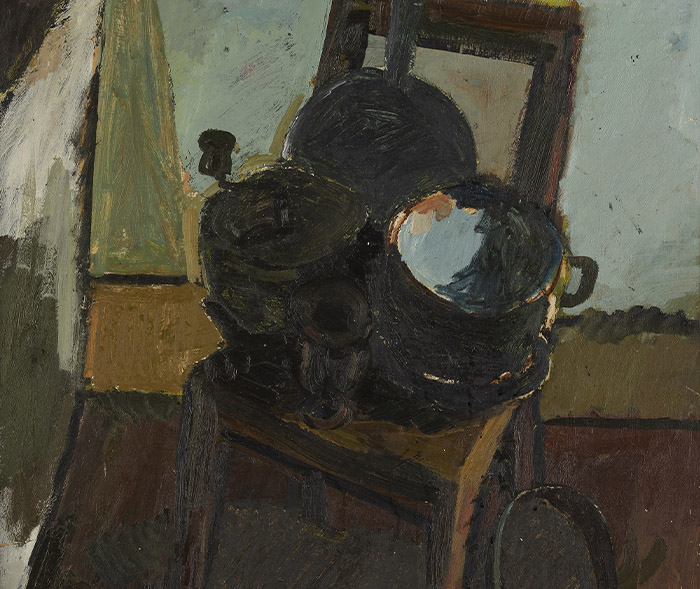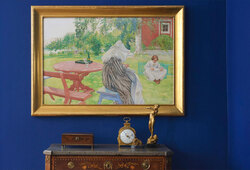Alf Lindberg – Paintings
In the early 1930s, the artist Alf Lindberg (1905-1990) and the musician Magnus Jensens (1902-1973) crossed paths in the "classic Gothenburg café" Junggrens Kafé (Jungans) which can still be found on the corner of Avenyn and Engelbrektsgatan in Gothenburg. A legendary café with artistic traditions reaching back to the time of Ivar Arosenius, and a venue mainly for painters, musicians and actors. Magnus Jensen was a chamber musician who, like his father, played the cello in the Gothenburg Orchestra Association, now the Gothenburg Symphony Orchestra, an institution he remained faithful to throughout his life. Alf Lindberg was a trained visual artist, a "strict expressionist" who, among other things, studied at Valand Art School for Tor Bjurström during the late 1920s.
These two creative personalities had a significant exchange of knowledge and thoughts. In addition to his daily work as a musician, Magnus Jensen devoted himself to creating in clay, wood and on canvas. This hobby took off in the early 30s and came to occupy more or less all of his free time and also led to certain artistic undertakings. Magnus Jensen has among other things made a large number of wooden reliefs and free sculptures in terracotta, which can still be seen today in Annedal Church, Gothenburg.
Magnus Jensen appreciated Alf Lindberg's art and purchased his works on numerous occasions. He also contributed funds for paint and canvas and over time became a frequent guest at Brita and Alf Lindberg's home at Kungsgatan in Gothenburg. Magnus Jensen's circle of friends also included Ragnar Sandberg, and the auction contains a few drawings by this artist as well.
Alf Lindberg was a generational friend of the so-called Gothenburg colorists for which colors were the main means of expression. Alf Lindberg developed his painting in a different direction and created his distinctive, strict design language – more in the spirit of Paul Cezanne who was one of his great role models.
During the 1930s and 1940s, Alf Lindberg consistently painted "simple" motifs such as landscapes, urban landscapes and still lifes, all to achieve the "perfect balance" of color and shape. Most of the works included in this collection, built by Magnus Jensen, are from this time. Magnus Jensen and his collection are mentioned in Folke Edward's book "Alf Lindberg" (Swedish General Art Association 1987) which is recommended reading for those who want a deeper introduction to Alf Lindberg's painting.

29 Esinettä




















































